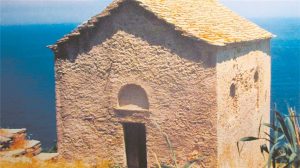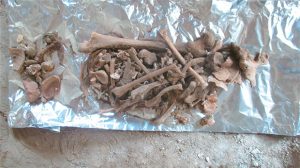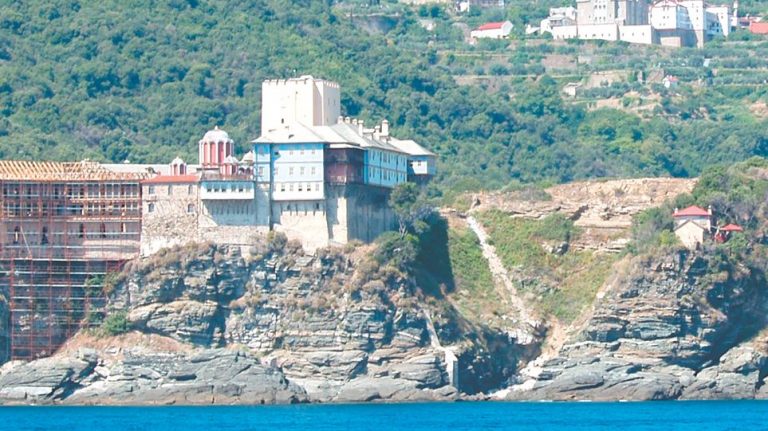Bones discovered under the marble floor of a Byzantine temple in a Mount Athos monastery, which may belong to a woman, are being examined by experts. The unexpected finding, according to Democritus peer researcher Yiannis Maniatis, will go through a series of months of testing to determine the age and gender of person the remains belonged to.
The researcher told THEMA exclusively that it is too early to draw any conclusions at this stage. He confirms that several people’s bones were indeed found, and the anthropologist who examined them said that there were some bones very small in size that suggested they could possibly belong to a woman. The anthropologist riled out the possibility of the remains belonging to a minor.
“The only test that will give us an unambiguous answer is DNA analysis and we may proceed with it. However, because this is a difficult and expensive test, the first step in the time-consuming process that we will follow is dating the bones. This way we will see what period they belong to so we can link them to specific events and individuals and then move on to the next steps.”
The bones were found during restoration work being carried out over recent years on the original core of the Pantokratoros Monastery building complex by the architect-restorer of the Mount Athos Heritage Conservation Centre, Phaidona Chatziantoniou. The monastery was founded shortly before 1357 by the great bishop Alexios and the great prince Ioannis.

The Monastery complex of Mount Athos is located on the peninsula of Athos and has a height of 2,033 metres. It dominates the southern tip of the eastern peninsula of Halkidiki. According to Article 105 of the Greek Constitution the Monastic community is a self-governing within the Greek state and women are prohibited from setting foot on the mountain. This rule has been in existence since the Justinian era and was legally established in 539AD.

This rule is so strict that even hens are not permitted to enter the area, forcing minks to bring in eggs from the outside. Most monks not only perceive the female presence as a temptation, but they believe that the Virgin Mary, to whom Athos is dedicated – being called “The Garden of Panagia” – is protecting her place by punishing those who trespass.
Ask me anything
Explore related questions





